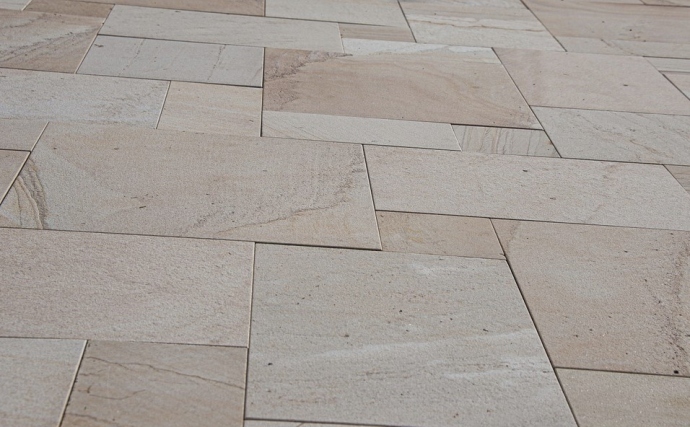
Installing stone tiles is easier than most people realize, and this simple project could greatly improve the appearance of your home. If you have recently decided to tackle this renovation, then you might need to pick up a few tools and supplies so that you don’t run into any major roadblocks.
Thinset
Thinset is a type of mortar that is used to hold tiles in place, and learning how to properly mix this product is exceedingly important. When the mortar isn’t the correct consistency, the tiles won’t adhere to the subfloor or underlayment. As a general rule, tile mortar needs to be the consistency of thick peanut butter. After you have mixed the mortar, you must give it 5 minutes before you apply it to the floor so that the polymers settle.
Sealer
Properly sealing your stone tiles is going to be one of the most important steps in this process. Without the proper seal, your tiles could become stained or damaged within a matter of months. Sealing should be done after the mortar has fully cured, and that usually takes at least 24 hours. If you don’t want to darken the stone, then you need to go with a natural sealer. Most stone sealers last for at least two years, but you might have to reseal the surface as often as once every year if it is a high-traffic area.
Level and Tape Measure
Throughout this process, you should keep a level and tape measure nearby at all times. In addition to quickly taking measurements, you can also use those tools to reduce lipping. That issue occurs when tiles are pushed too close together or aren’t sitting perfectly flat on the mortar. Lipping will increase your risk of cracked and chipped tiles, and it should be avoided at all costs.
Masonry Saw
A high-quality saw is going to be an invaluable tool during this project, and you should spend some time researching some of the top masonry saws. For natural stone, you will need to find a wet/dry saw that can hold a basin of water. Natural stone is incredibly dense, and the blade is going to become damaged if it gets too hot. The basin of water will keep the blade cool while washing away grit.
Once you have gathered all of your tools and supplies, you might want to remove the baseboards so that you have a little wiggle room. Most rooms aren’t perfectly square, and removing those panels will allow you to maintain straight lines even when the walls aren’t perpendicular.

